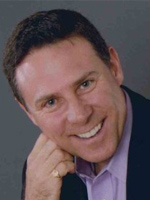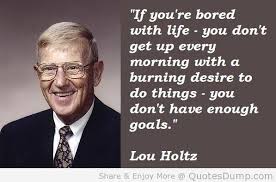Over the past few weeks, I have offered a model of coaching that provides a structure intended to be a strong and lasting blueprint that you can use for almost all of your group and individual coaching. The model is called GROW.
 Today we will focus on the O of GROW, which stands for both Obstacles and Options as defined below.
Today we will focus on the O of GROW, which stands for both Obstacles and Options as defined below.
Obstacle: Barrier, hurdle, stumbling block, obstruction, snag, handicap, complication, disadvantage.
Option: Choice, alternative, a different path
As you may recall from last week we reviewed Reality (the R in the GROW model). The key to fully understanding the Reality is to establish an honest account of what occurred with last year’s goals.
The next step in the process is to develop a fairly exhaustive list of possible Obstacles likely to hinder the reaching of ones original well-defined Goals (See edition on Goals). Obstacles can include blind-spots and false assumptions that prevented an individual from reaching their goals last year.
This can require excessive amounts of brainstorming between you and the person you're coaching (your client), with the client leading the way. Have him/her write down each Obstacle. Your job during this exercise is to act as the facilitator. Listen carefully for Obstacles that are not being considered.
After a complete and thorough spectrum of Obstacles has been identified, you are ready to build a list of Options or alternative ways to address those obstacles and the blind spots.
In defining solutions it is imperative that they are coming from the client, remember you are the coach and should only offer suggestions when it is clear that there are obvious solutions the client is not clearly seeing.
The Options step should carry with it a sense of exploration and should not be rushed. You are about to build a new road map and forge a new path to markedly improved results. This is imporant work.
Avoid the temptation to get lazy with this step. Keep on probing, asking, and asking more, until you have a bit of a Eureka moment. You won't always have a Eureka moment, but it helps to always aim for one.
Now that you have a clear list of all options you are ready to build a path for the W in the GROW model: the Way forward. Till next week…
Join the WorkPuzzle Discussion at the Tidemark Online Community (TMOC)
Engage in the WorkPuzzle discussion by joining the TMOC private social network. Commenting on a public blog like WorkPuzzle can be a little intimidating, so why not join the discussion inside the privacy of the TMOC discussion group?
By joining TMOC, you'll get to see who else is in the group and your comments will only be seen by those whom you trust. Joining TMOC is quick, easy, and free (no kidding…this takes less than 2 minutes). To get started, click here.
Already of a member of TMOC? If so, join the WorkPuzzle Dialog Group by clicking on the WorkPuzzle Group icon on the left side of your TMOC homepage. Questions? Email the WorkPuzzle editor (workpuzzle@hiringcenter.net) and we'll walk through the process.
 Editor's Note: This article was written by Dr. David Mashburn. Dave is a Clinical and Consulting Psychologist, a Partner at Tidemark, Inc. and a regular contributor to WorkPuzzle.
Editor's Note: This article was written by Dr. David Mashburn. Dave is a Clinical and Consulting Psychologist, a Partner at Tidemark, Inc. and a regular contributor to WorkPuzzle.













